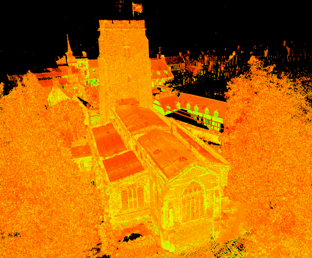Alexandra Grounds is ‘trying to get the industry to open its eyes’
After some 14 years surveying with Mouchel, an engineering consulting firm in the UK tasked with, among other things, maintaining UK highways, Alexandra Grounds set out on her own last year to found Grounds Associates, one of the first self-professed building information management consultancies.
“I educate people about what BIM is,” Grounds says simply, “I’m always evangelizing.” Particularly, she is focused on highlighting the surveyor’s vital role in the BIM lifecycle, especially in any sort of as-built environment, but also in greenfield applications where constant evaluation of progress, and data feedback to the BIM process is vital.
“What drives BIM is the 3D model that the surveyors create,” Grounds says. “I want to get them to see what they can offer to the greater AEC industry.”
Of course, there wouldn’t be a need for a BIM evangelist if the AEC community had completely bought into the BIM philosophy. So, what gets AEC types on board in the first place?
“You just do the survey once,” Grounds says. “You don’t repeat it time and time again. You’ll have this project with lots of different surveys done, and all the different parties needing the information, and then you ask, ‘Why didn’t you just scan it? Then you can all use the scan to get the information out.’ And they go, ‘Oh.’ The light goes on.”
But there’s still plenty of work to be done in establishing standards for working in BIM, a topic on which Grounds will be presenting at SPAR Europe, November 8, at the World Forum, the Hague.
Grounds notes that BIM, and the way BIM is done, is being driven by the UK and US governments, both, but in different ways. While the United States’ GSA, for example, is mandating the use of BIM on projects, the UK “is not saying you’ve got to use the BIM process, but they’re mandating the outcomes of the project,” Grounds says, “and if you want to be able to deliver like that, you have to use the process. Therefore you have to use BIM.”
Historical restoration, specifically, is driving BIM use in as-built situations, often known as scan-to-BIM. At SPAR, “I’ll be talking about how you go about modeling historical buildings and what you can and cannot do, and how much do you model and how far do you go,” says Grounds. “You really need to talk with the architect about how much information they need.”
Because there are so many intricacies to such jobs, with old pipe work, beams that have sagged over hundreds of years, scanning and point clouds are proving crucial to historical preservation work. Modeling in a program like Revit, without point clouds, only allows for idealized versions of these sagging beams, Grounds said, which is why bringing point clouds into Revit 2012, even in its current limited fashion, can save real time and money.
“I see point clouds being huge in BIM,” Grounds said.






